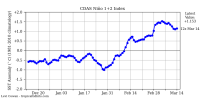Ledian
Member
Severe Thunderstorm Watch coming soon for DFW and points due east
Follow along with the video below to see how to install our site as a web app on your home screen.
Note: This feature may not be available in some browsers.
Insert "simpsonscollartug.gif"I don't think it's a good sign when storms already want to rotate 36-48 hours ahead of the "main event."
Tonight we have the less intense sequel to the Jackson Blob, the Pell City Blob.Jackson is currently being attacked by The Blob.
View attachment 34761

Literally the only thing on the radar. It’s so lonely;(Tonight we have the less intense sequel to the Jackson Blob, the Pell City Blob.
View attachment 35407








Wow wow. Really amazing stuff, truly unbelievable how solid and consistently correlational these observations are. Super appreciate you posting them here, Matt!This is probably going to be difficult to interpret and understand, but I'm going to post what I have been working on with Fred for the last 20 years and in particular after 2011. I began successfully internal forecasts in 2021 using the MJO, but the code had not yet been cracked on large-scale outbreaks for the Deep South. Ironically, this all became much clearer in the last few months leading up to the current March 14-16 expected outbreak. It's truly freaky to see this playing out.
The current MJO (Madden-Julian Oscillation) evolution matches that of April 3, 1974, February 5, 2008 (Super Tuesday), and April 27, 2011. What is not included in this presentation is the Trans-Nino Index, which has an extremely positive value right now that is correlated to seasons with major tornado outbreaks. Not all La Ninas are created equal. Some don't have a positive TNI value, but the 2025 La Nina is special.
With all of this information in hand, I took the risk of sending this outlook from February 26 to our staff on March 2, highlighting the window of March 14-20 as the most likely time frame for a large-scale tornado outbreak. Additionally, we'll be watching for the next MJO wave in about 40 days.
View attachment 35562
View attachment 35548
View attachment 35549
View attachment 35550
View attachment 35553
View attachment 35554
View attachment 35555
View attachment 35556
Thank you so much for all this .
Agreed!@Matt Grantham - Spectacular work. I knew years ago you were going to do amazing things in weather, but this is just outstanding.
BrettAgreed!
Who all from here have made a career out of weather? Matt, Daniel Lamb, Fred. Who else?
I can't seem to access the NOAA TNI page; just gets me the error page. Is there another way to access it? Just asking




